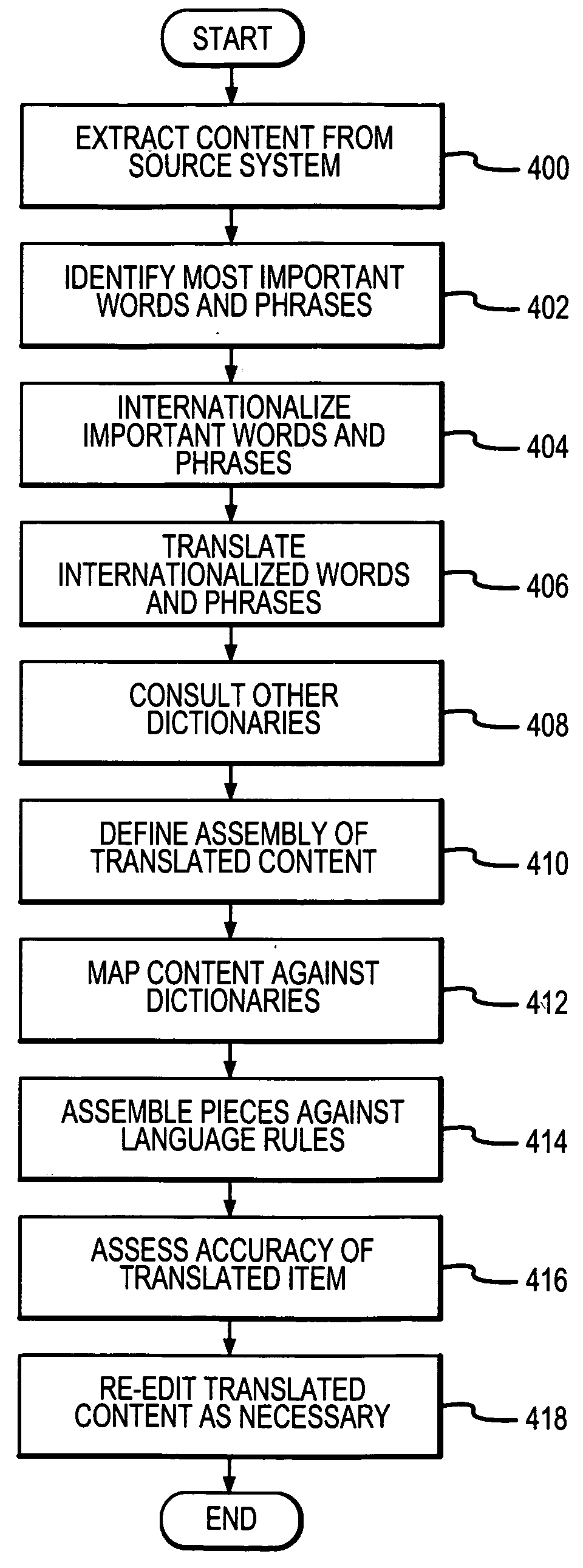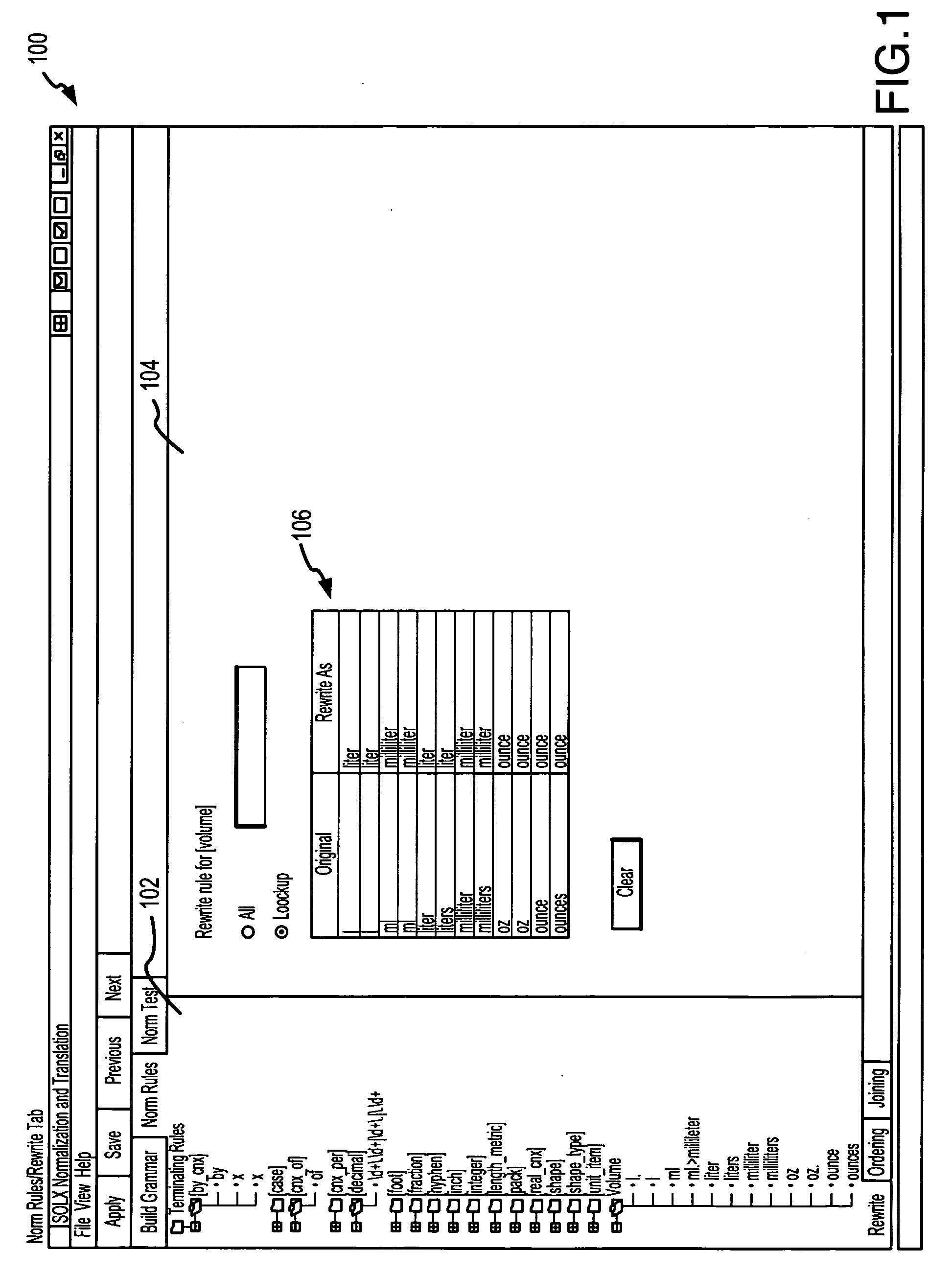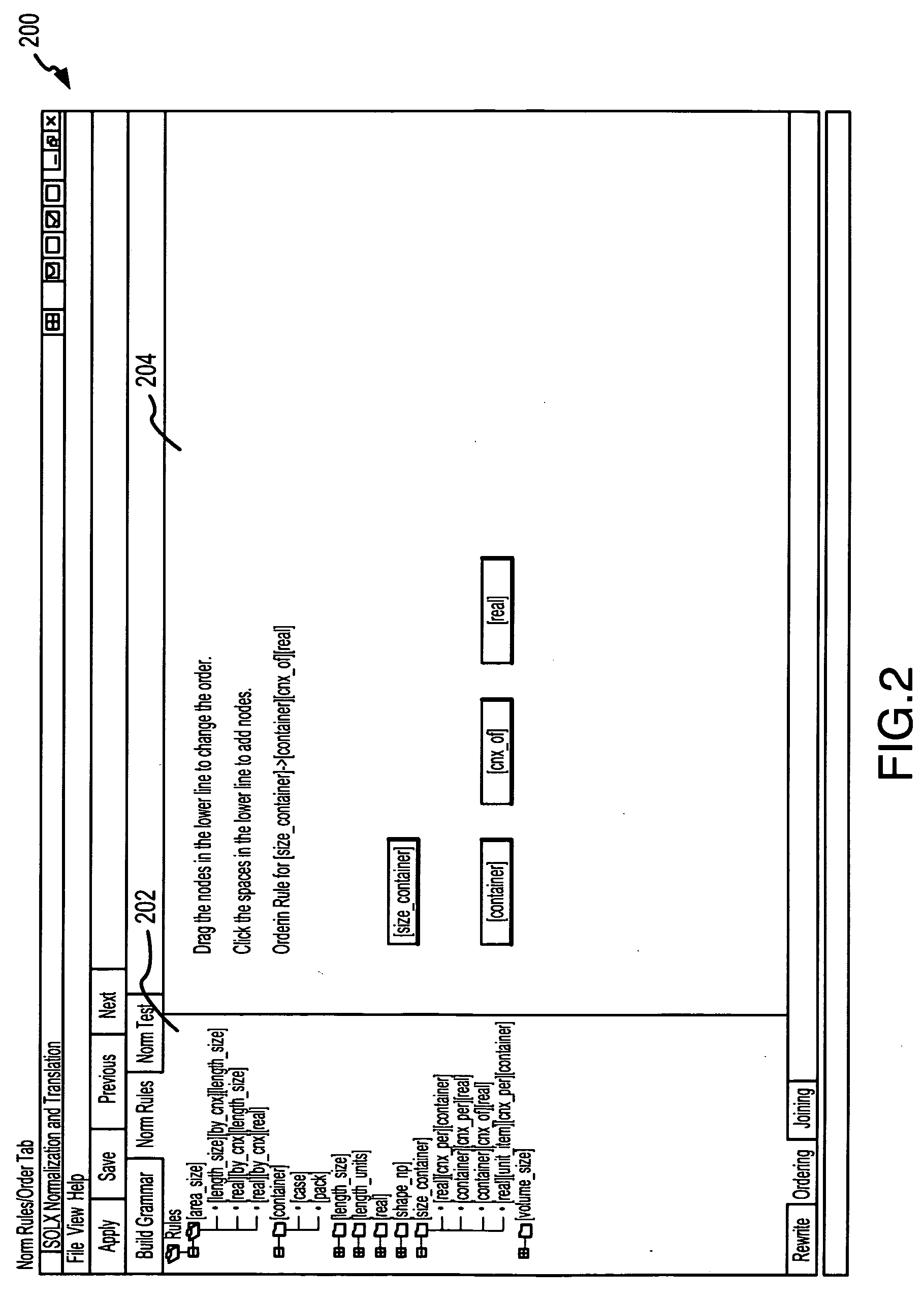Method and apparatus for normalizing and converting structured content
a structured content and content technology, applied in the field of machine transformation of information, can solve problems such as special challenges in the transformation of business content, and achieve the effects of facilitating the mapping process, facilitating processing, and efficient developmen
- Summary
- Abstract
- Description
- Claims
- Application Information
AI Technical Summary
Benefits of technology
Problems solved by technology
Method used
Image
Examples
Embodiment Construction
[0035] The present invention relates to a computer-based tool for facilitating substantially real-time transformation of electronic communications. As noted above, the invention is useful in a variety of contexts, including transformation of business as well as non-business content and also including transformation of content across language boundaries as well as within a single language environment. In the following description, the invention is described in connection with the transformation of business content from a source language to a target language using a Structured Object Localization expert (SOLx) system. This application serves to fully illustrate various aspects of the invention. It will be appreciated, however, that the invention is not limited to this application.
[0036] In addition, in order to facilitate a more complete understanding of the present invention and its advantages over conventional machine translation systems, the following description includes consider...
PUM
 Login to View More
Login to View More Abstract
Description
Claims
Application Information
 Login to View More
Login to View More - R&D
- Intellectual Property
- Life Sciences
- Materials
- Tech Scout
- Unparalleled Data Quality
- Higher Quality Content
- 60% Fewer Hallucinations
Browse by: Latest US Patents, China's latest patents, Technical Efficacy Thesaurus, Application Domain, Technology Topic, Popular Technical Reports.
© 2025 PatSnap. All rights reserved.Legal|Privacy policy|Modern Slavery Act Transparency Statement|Sitemap|About US| Contact US: help@patsnap.com



